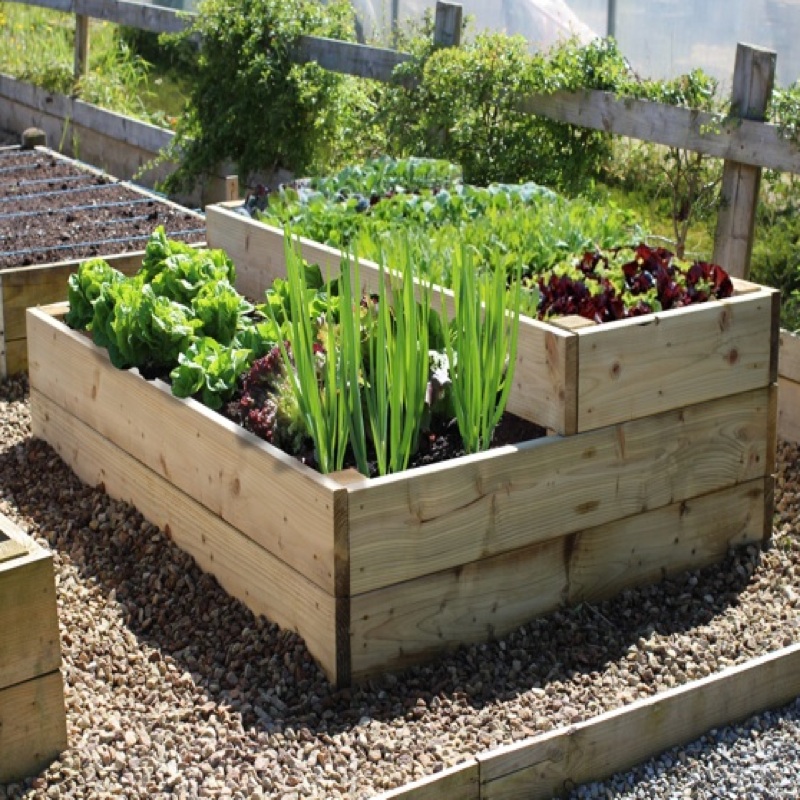Mastering Raised Bed Gardening, Beginner's Guide

Mastering Raised Bed Gardening: Beginner's Guide
Ever thought about starting your own vegetable garden but felt intimidated by the sheer scale of the task? Raised bed vegetable gardening for beginners is the perfect solution. It's like having a tiny, manageable farm right in your backyard. Let's dive in and explore how to get started, from raised bed construction to soil preparation, vegetable planting, and essential gardening techniques.
Why Choose Raised Bed Gardening?
Raised bed gardening is like having a VIP section for your plants. It offers better drainage, easier soil control, and fewer weeds. Plus, it's gentler on your back since you don't have to bend over as much. Sounds like a win-win, right?
Getting Started: Raised Bed Construction
First things first, you need to build your raised bed. Don't worry, it's not as daunting as it sounds. You can use materials like wood, concrete blocks, or even recycled materials. The key is to ensure it's sturdy and deep enough for your plants' roots. Aim for at least 12 inches deep.
Location, Location, Location
Just like in real estate, location is crucial in gardening. Most vegetables need at least 6-8 hours of sunlight daily. So, pick a spot that's sunny and, if possible, close to a water source for easy watering.
Soil Preparation: The Foundation of Your Garden
Once your bed is built, it's time to fill it with the right soil. You want a mix that's rich in nutrients and drains well. A combination of topsoil, compost, and potting soil usually does the trick. Avoid using soil from your yard, as it can be too heavy and compacted.
Vegetable Planting: What and When?
Now comes the fun part - planting! Some easy vegetables for beginners include tomatoes, lettuce, radishes, and peas. But when to plant them? It depends on your climate and the specific veggies. Cool-season crops like lettuce and spinach prefer spring and fall, while warm-season crops like tomatoes and peppers thrive in summer.
Gardening Techniques: Caring for Your Plants
Watering: The Essential Element
Water is life, especially for your plants. Aim for about an inch of water per week, either from rainfall or your watering can. But be careful not to overwater - soggy soil can lead to root rot.
Mulching: The Unsung Hero
Mulch is like a cozy blanket for your soil. It helps retain moisture, suppresses weeds, and regulates soil temperature. Organic mulches like straw or wood chips will even break down over time, adding nutrients to your soil.
Fertilizing: Food for Your Plants
Even with the best soil, your plants will eventually need a nutrient boost. Organic fertilizers like compost or fish emulsion are great options. Just follow the package instructions to avoid overfeeding.
Pest Control: The Organic Way
Pests are an inevitable part of gardening, but there are organic ways to deal with them. Beneficial insects like ladybugs and lacewings can help control pests. You can also use physical barriers like row covers or try homemade repellents.
Companion Planting: Friends with Benefits
Some plants just go better together. Companion planting is the art of pairing plants that benefit each other, whether by deterring pests, improving soil, or enhancing flavor. For example, basil is a great companion for tomatoes.
Rotating Crops: Keeping Your Soil Healthy
Crop rotation is like a merry-go-round for your veggies. It involves changing the location of your plants each season to prevent soil depletion and pest infestations. It's a bit more advanced, but worth considering as you gain experience.
Harvesting: The Fruits of Your Labor
Harvesting is the best part of gardening. It's when you get to enjoy the literal fruits (and veggies) of your labor. Most vegetables taste best when harvested young and tender. Plus, regular harvesting encourages plants to produce more.
Common Mistakes to Avoid
Even the greenest of thumbs make mistakes. Overwatering, overcrowding plants, and neglecting soil health are common pitfalls. But don't worry, every mistake is a learning opportunity.
For more tips and tricks, check out this comprehensive guide on raised bed gardening from Gardeners.com.
Conclusion
Raised bed vegetable gardening for beginners is a rewarding journey. It's not just about growing food; it's about nurturing life, learning, and connecting with nature. So, roll up your sleeves, grab your trowel, and let's get growing!
FAQs
Q: How deep should my raised bed be? A: Aim for at least 12 inches deep to provide enough room for most vegetable roots.
Q: What's the best soil for raised beds? A: A mix of topsoil, compost, and potting soil is ideal. It's rich in nutrients and drains well.
Q: How often should I water my raised bed garden? A: Aim for about an inch of water per week. Adjust based on rainfall and weather conditions.
Q: What are the easiest vegetables to grow for beginners? A: Some easy-to-grow veggies include lettuce, radishes, peas, and tomatoes.
Q: How do I deal with pests organically? A: Beneficial insects, physical barriers, and homemade repellents are all organic pest control methods.
0 Response to " Mastering Raised Bed Gardening, Beginner's Guide"
Post a Comment